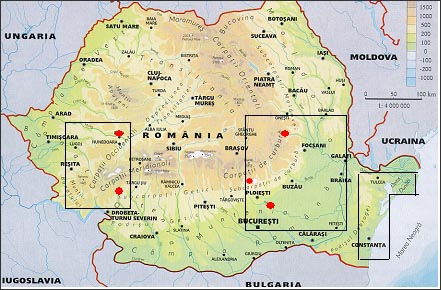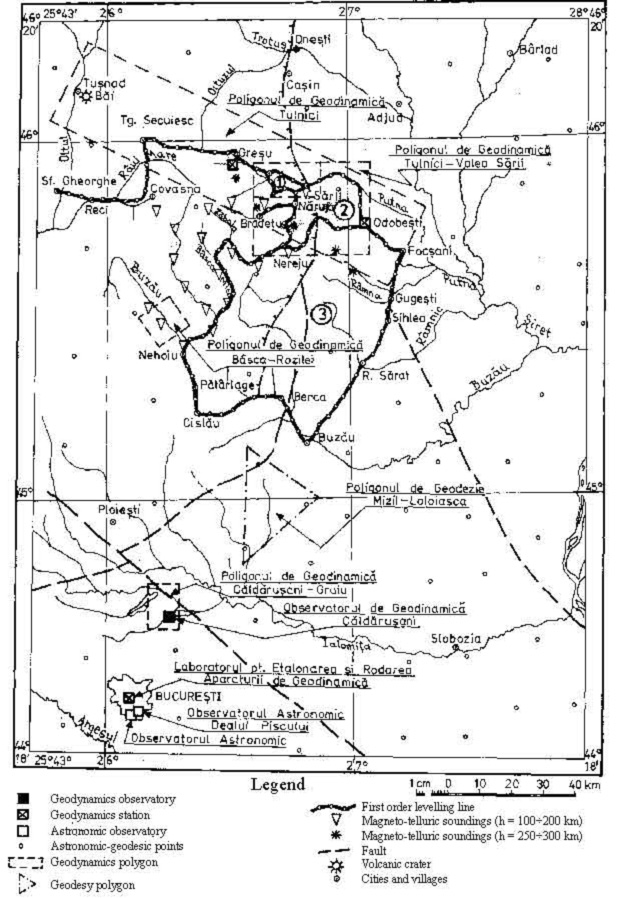RESEARCH INFRASTRUCTURE
At present, the Institute has a network of observatories and observation points, structured in profiles and geodynamics polygons, all having as a main purpose a better knowledge of phenomena leading to stress cumulating/earthquake triggering in geodynamically active areas, with a special concern for the geodynamically active area of the Romanian Carpathians bend – the Vrancea seismogenic zone. The network is concentrated in three geodynamics polygons: the Caldarusani-Tulnici Geodynamics Polygon, the Craciunesti-Deva, Sarmizegetusa Regia, Pades-Gorj Geodynamics Polygon and the Danube Delta – Mangalia Geodynamics Polygon.


Fig. 1 Astro-geodynamic polygons from Romania
Among these polygons, a special place is occupied by the Caldarusani-Tulnici Geodynamics Polygon which includes – besides the laboratories for equipment gauging and aging, arranged in the framework of the Caldarusani Geodynamics Observatory (Fig. 2) in the basement of the group of buildings that constitute the headquarters of the IG”SSS”AR, and in the basement of the headquarters of the Romanian Academy – several micropolygons consisting of over 200 observation points, that allow the performing of repeated measurements, usually at 6 months up to 5 years intervals, and of underground laboratories, which allow data acquisition – within the limits of the possible, without interruption – corresponding to variations in the crust tilt and in the gravity, the magnetic and the electric fields in Vrancea area. In the same area is included the Provita de Sus Electromagnetic Observatory. Among these micropolygons, the most important one – the Micropolygon I Tulnici – is situated in the Vrancea geodynamically active area on both sides of the contact on which the hypocenters of the Vrance seismogenic area are situated, to a depth that may exceptionally exceed 180 km.

Fig. 2. Caldarusani -Tulnici Geodynamics Polygon

Fig. 3. The location of the Vrancea Natural Laboratory for Geodynamics

Fig. 4. The Mycropolygon I – Tulnici
We underline the fact that at present, the Caldarusani Geodynamics Observatory is functioning in the building where recordings were carried out on the occasion of the total solar eclipse in February 1961 and that the co-operation established in 1961 between the Caldarusani Monastery – the Romanian Orthodox Church and the Caldarusani Geodynamics Observatory (the Geophysical Research Centre) – the Romanian Academy, was officially celebrated in 2001, at the anniversary of four decades of existence of the first and up to now the only co-operation established between one of the orthodox churches – the Romanian Orthodox Church – and science – the Romanian Academy.








